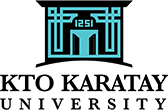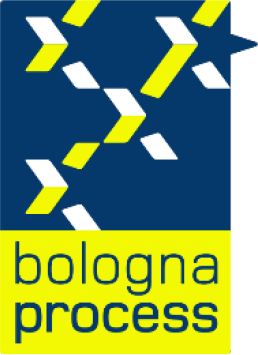Medical Imaging Techniques
Course Details

KTO KARATAY UNIVERSITY
Vocational School of Medical Services
Programme of Medical Imaging Techniques
Course Details
Vocational School of Medical Services
Programme of Medical Imaging Techniques
Course Details

| Course Code | Course Name | Year | Period | Semester | T+A+L | Credit | ECTS |
|---|---|---|---|---|---|---|---|
| 02920002 | Medical Imaging II | 1 | Spring | 2 | 4+0+4 | 8 | 8 |
| Course Type | Compulsory |
| Course Cycle | Associate (Short Cycle) (TQF-HE: Level 5 / QF-EHEA: Short Cycle / EQF-LLL: Level 5) |
| Course Language | Turkish |
| Methods and Techniques | Anlatım, Soru-cevap, Tartışma, Gösterip yapma yöntemi. |
| Mode of Delivery | Face to Face |
| Prerequisites | - |
| Coordinator | - |
| Instructor(s) | - |
| Instructor Assistant(s) | - |
Course Content
Contents of the Course Fluoroscopic Imaging, Contrast Materials in Fluoroscopic Examinations, Digestive System Fluoroscopic Imaging, Braille System Fluoroscopic Imaging, Urogenital System Fluoroscopic Imaging, Mammographic Instruments, Angiography Instruments, Coronary Angiography, Cerebral Angiography. Angiography in Stend Applications. Angiography in Abdominal Practices, Angiography in Thoracic Practices, Angiography in Upper Limb Practices, Other Angiography Practices. Mammography, Ultrasonography, Gamma camera, Emergency X-ray definition, Emergency X-ray preparation. Cranium, thorax, Blood, limb positions
Objectives of the Course
With this course students will be in Radiology unit; It is aimed to acquire the qualifications related to radiography by preparing the x-ray device, computerized x-ray device, digital x-ray device, portable x-ray devices for radiographic examination in line with national and international standards.
Contribution of the Course to Field Teaching
| Basic Vocational Courses | X |
| Specialization / Field Courses | |
| Support Courses | |
| Transferable Skills Courses | |
| Humanities, Communication and Management Skills Courses | X |
Relationships between Course Learning Outcomes and Program Outcomes
| Relationship Levels | ||||
| Lowest | Low | Medium | High | Highest |
| 1 | 2 | 3 | 4 | 5 |
| # | Program Learning Outcomes | Level |
|---|---|---|
| P1 | Has the knowledge to evaluate and apply shooting positions related to the field of medical imaging techniques, technical infrastructure and physics principles of imaging devices, radiation safety and radiation protection rules, pharmacological structures of contrast agents, side effects and risk factors, and uses applied knowledge. | 5 |
Course Learning Outcomes
| Upon the successful completion of this course, students will be able to: | |||
|---|---|---|---|
| No | Learning Outcomes | Outcome Relationship | Measurement Method ** |
| O1 | Ability to express the necessary theoretical knowledge in imaging processes in the field of medical imaging techniques. | P.1.1 | 1 |
| O2 | Ability to understand the application requirements of imaging processes in the field of medical imaging techniques by associating them with theoretical foundations. | P.1.2 | 1,7 |
| O3 | Ability to apply theoretical knowledge of imaging processes in the field of medical imaging techniques on the patient. | P.1.3 | 7 |
| O4 | Ability to develop strategies in imaging processes in the field of medical imaging techniques. | P.1.5 | 1,7 |
| ** Written Exam: 1, Oral Exam: 2, Homework: 3, Lab./Exam: 4, Seminar/Presentation: 5, Term Paper: 6, Application: 7 | |||
Weekly Detailed Course Contents
| Week | Topics |
|---|---|
| 1 | Basic concepts and working principles of emergency x-ray |
| 2 | Emergency x-ray techniques |
| 3 | Emergency x-ray techniques |
| 4 | Contrast agents used in radiology |
| 5 | Ultrasonography devices |
| 6 | Bone Mineral Densitometry Device (DEXA) |
| 7 | Bone Mineral Densitometry Device (DEXA) |
| 8 | Midterm Exam |
| 9 | Working principles in mobile x-ray |
| 10 | Mobile X-rays |
| 11 | Urinary system radiography |
| 12 | Digestive system reviews |
| 13 | Circulatory system reviews |
| 14 | Angiography |
Textbook or Material
| Resources | Tekin, H. O. 2018. X-ray imaging techniques: all methods - basic principles advanced applications. Antalya: Congress Bookstore. |
Evaluation Method and Passing Criteria
| In-Term Studies | Quantity | Percentage |
|---|---|---|
| Attendance | - | - |
| Laboratory | - | - |
| Practice | - | - |
| Field Study | - | - |
| Course Specific Internship (If Any) | - | - |
| Homework | - | - |
| Presentation | - | - |
| Projects | - | - |
| Seminar | - | - |
| Quiz | - | - |
| Listening | - | - |
| Midterms | 1 | 40 (%) |
| Final Exam | 1 | 60 (%) |
| Total | 100 (%) | |
ECTS / Working Load Table
| Quantity | Duration | Total Work Load | |
|---|---|---|---|
| Course Week Number and Time | 14 | 5 | 70 |
| Out-of-Class Study Time (Pre-study, Library, Reinforcement) | 14 | 10 | 140 |
| Midterms | 1 | 10 | 10 |
| Quiz | 0 | 0 | 0 |
| Homework | 0 | 0 | 0 |
| Practice | 0 | 0 | 0 |
| Laboratory | 0 | 0 | 0 |
| Project | 0 | 0 | 0 |
| Workshop | 0 | 0 | 0 |
| Presentation/Seminar Preparation | 0 | 0 | 0 |
| Fieldwork | 0 | 0 | 0 |
| Final Exam | 1 | 20 | 20 |
| Other | 0 | 0 | 0 |
| Total Work Load: | 240 | ||
| Total Work Load / 30 | 8 | ||
| Course ECTS Credits: | 8 | ||
Course - Learning Outcomes Matrix
| Relationship Levels | ||||
| Lowest | Low | Medium | High | Highest |
| 1 | 2 | 3 | 4 | 5 |
| # | Learning Outcomes | P1 |
|---|---|---|
| O1 | Ability to express the necessary theoretical knowledge in imaging processes in the field of medical imaging techniques. | 5 |
| O2 | Ability to understand the application requirements of imaging processes in the field of medical imaging techniques by associating them with theoretical foundations. | 5 |
| O3 | Ability to apply theoretical knowledge of imaging processes in the field of medical imaging techniques on the patient. | 5 |
| O4 | Ability to develop strategies in imaging processes in the field of medical imaging techniques. | 5 |
